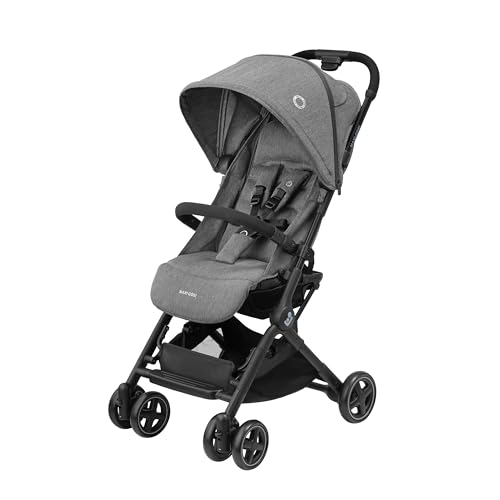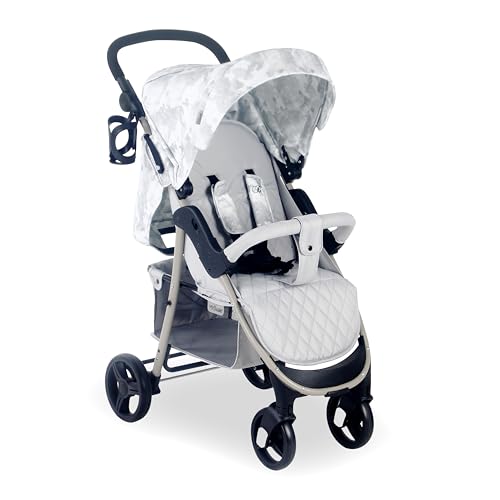9 Lessons Your Parents Taught You About Running Pram
페이지 정보
작성자 Jasmin 작성일24-07-11 18:29 조회28회 댓글0건관련링크
본문
What to Look For in a Running Pram
A running pram is a type of stroller that is designed to handle greater speeds and has wheel suspension for an easier ride for babies. They come with the front wheel which can be locked into place to ensure safety, and hand brakes for greater control.
 The majority of pelvic floor physical therapy recommend waiting until babies are nine-months-old before they begin buggy running. Every child is different.
The majority of pelvic floor physical therapy recommend waiting until babies are nine-months-old before they begin buggy running. Every child is different.
Safety first
It is gratifying to incorporate your baby into your fitness routine, however safety must always come first. Ensure that you choose quiet, safe paths or wide, paved ones and stick to the time of day when your baby is most relaxed. Babies can be very fussy with a full stomach, so it's important to plan your jog around feed times for a smooth, trouble-free experience. Essential features like a five-point harness and a handbrake can ensure your baby's safety while you run and help you retain control, particularly when you're speeding and may need to quickly stop.
For parents who love their cardio workout that makes them feel good, a running pram is an excellent option. It doubles the calories-burning outdoor exercise and the precious bonding time and you'll be motivated to continue even as your child gets bigger. It can be tempting to compare your solo running pace with your jogging speed, but keep in mind that the demands on your legs are higher when you're pushing a baby and their gear. If you're looking to push yourself further think about investing in a specialised pram for jogging with air-filled tyres that provide shock absorption and smooth bumps.
Stability
If you're running with a baby in a pram, stability is vital for both your enjoyment and the safety of your little passenger. Pick a stroller that is stable and responsive, with large wheels that are capable of rolling over any surface and absorbing bumps. It should also come with a locking wheel on the front to increase maneuverability at higher speeds. Look for a model with air-filled tyres to keep the pressure up and decrease the risk of punctures.
The ideal pram will allow you to maintain your natural running posture without stooping, or leaning too far back. This can result in pains. You should also find the right balance between pushing harder and easing off so that you don't strain your hips, knees, or back.
You can also increase your stability and comfort by selecting a model with adjustable handlebars to fit your height. This will stop you from having to lower your feet when running, and will make sure that your wrists don't get too stressed.
There's no cookie-cutter answer for the time your baby will be ready to move out of the pram, however, involving the exercise routine in the early years can give them the confidence to be independent and set the foundations for an active lifestyle. It's also a great way to spend quality time with them and help them to become more comfortable in the outdoors.
Accelerate
The best running prams offer an easy and stable ride at a fast speed. They usually have a swivel front wheel that makes it easy for manoeuvring around town or for everyday pram use but they can also be locked into a fixed location to ensure safety when traveling at high speeds. The back wheels are usually large and feature suspension to smooth bumps and reduce the impact on your baby. They should be made from a durable and puncture-resistant material.
It's a great feeling to watch your child be active and a running stroll can aid them in maintaining an ideal life for the rest of their lives. It's important to keep in mind that running with a stroller is different than running by yourself. While you might be able clock up long runs faster however, your endurance might be affected and your child could be overstimulated.
To avoid overdoing it, we recommend limiting your jogs to around 6km until you feel confident that your baby is comfortable in their stroller for jogging. You may discover that your baby can run longer distances before this time, but you should consult your paediatrician or family doctor to ensure your child is able to handle the strenuous task. If you plan on pushing your baby uphill then it's best to start this once you have a good amount of time on flat surfaces at a brisk pace. It is also possible to think about an all-terrain stroller with wide, high-traction tyres to let you deal with dirt, roots, and other natural obstacles.
Comfort
You'll also want to make sure that your child is as comfortable as possible. This could mean a system that absorbs the impact and reduces bumpiness, or air-filled rubber tires that have the same feel and feel as bike tyres, but with no danger of punctures.
It is also important to choose the right time for your run, since babies are usually satisfied after a nap or a feeding. It's also worth considering the type of surface you'll be using. damaged pathways can be a nightmare for young pram runners, while smooth surfaces are much easier to navigate at a faster pace.
Running prams are an excellent way to get back to your fitness routine and ensure your baby is with you on your most memorable adventures. Many feature adaptable designs that convert between a running pram, a regular pram, and bike trailer, meaning you can continue to take your child on family trips as they grow. Remember that incorporating your child in exercise isn't just about improving their health and well-being, but also about giving them the confidence and pram bags freedom to enjoy the outdoors.
A running pram is a type of stroller that is designed to handle greater speeds and has wheel suspension for an easier ride for babies. They come with the front wheel which can be locked into place to ensure safety, and hand brakes for greater control.
 The majority of pelvic floor physical therapy recommend waiting until babies are nine-months-old before they begin buggy running. Every child is different.
The majority of pelvic floor physical therapy recommend waiting until babies are nine-months-old before they begin buggy running. Every child is different.Safety first
It is gratifying to incorporate your baby into your fitness routine, however safety must always come first. Ensure that you choose quiet, safe paths or wide, paved ones and stick to the time of day when your baby is most relaxed. Babies can be very fussy with a full stomach, so it's important to plan your jog around feed times for a smooth, trouble-free experience. Essential features like a five-point harness and a handbrake can ensure your baby's safety while you run and help you retain control, particularly when you're speeding and may need to quickly stop.
For parents who love their cardio workout that makes them feel good, a running pram is an excellent option. It doubles the calories-burning outdoor exercise and the precious bonding time and you'll be motivated to continue even as your child gets bigger. It can be tempting to compare your solo running pace with your jogging speed, but keep in mind that the demands on your legs are higher when you're pushing a baby and their gear. If you're looking to push yourself further think about investing in a specialised pram for jogging with air-filled tyres that provide shock absorption and smooth bumps.
Stability
If you're running with a baby in a pram, stability is vital for both your enjoyment and the safety of your little passenger. Pick a stroller that is stable and responsive, with large wheels that are capable of rolling over any surface and absorbing bumps. It should also come with a locking wheel on the front to increase maneuverability at higher speeds. Look for a model with air-filled tyres to keep the pressure up and decrease the risk of punctures.
The ideal pram will allow you to maintain your natural running posture without stooping, or leaning too far back. This can result in pains. You should also find the right balance between pushing harder and easing off so that you don't strain your hips, knees, or back.
You can also increase your stability and comfort by selecting a model with adjustable handlebars to fit your height. This will stop you from having to lower your feet when running, and will make sure that your wrists don't get too stressed.
There's no cookie-cutter answer for the time your baby will be ready to move out of the pram, however, involving the exercise routine in the early years can give them the confidence to be independent and set the foundations for an active lifestyle. It's also a great way to spend quality time with them and help them to become more comfortable in the outdoors.
Accelerate
The best running prams offer an easy and stable ride at a fast speed. They usually have a swivel front wheel that makes it easy for manoeuvring around town or for everyday pram use but they can also be locked into a fixed location to ensure safety when traveling at high speeds. The back wheels are usually large and feature suspension to smooth bumps and reduce the impact on your baby. They should be made from a durable and puncture-resistant material.
It's a great feeling to watch your child be active and a running stroll can aid them in maintaining an ideal life for the rest of their lives. It's important to keep in mind that running with a stroller is different than running by yourself. While you might be able clock up long runs faster however, your endurance might be affected and your child could be overstimulated.
To avoid overdoing it, we recommend limiting your jogs to around 6km until you feel confident that your baby is comfortable in their stroller for jogging. You may discover that your baby can run longer distances before this time, but you should consult your paediatrician or family doctor to ensure your child is able to handle the strenuous task. If you plan on pushing your baby uphill then it's best to start this once you have a good amount of time on flat surfaces at a brisk pace. It is also possible to think about an all-terrain stroller with wide, high-traction tyres to let you deal with dirt, roots, and other natural obstacles.
Comfort
You'll also want to make sure that your child is as comfortable as possible. This could mean a system that absorbs the impact and reduces bumpiness, or air-filled rubber tires that have the same feel and feel as bike tyres, but with no danger of punctures.
It is also important to choose the right time for your run, since babies are usually satisfied after a nap or a feeding. It's also worth considering the type of surface you'll be using. damaged pathways can be a nightmare for young pram runners, while smooth surfaces are much easier to navigate at a faster pace.
Running prams are an excellent way to get back to your fitness routine and ensure your baby is with you on your most memorable adventures. Many feature adaptable designs that convert between a running pram, a regular pram, and bike trailer, meaning you can continue to take your child on family trips as they grow. Remember that incorporating your child in exercise isn't just about improving their health and well-being, but also about giving them the confidence and pram bags freedom to enjoy the outdoors.

댓글목록
등록된 댓글이 없습니다.




